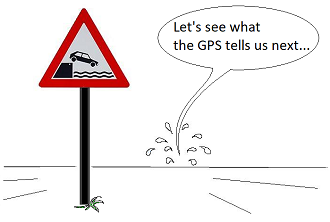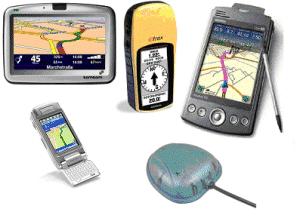The Basics of Global Positioning
GPS is the acronym for Global Positioning System, a technology that is particularly helpful in determining the position of certain objects on the Earth's surface and in navigating.
The basis for the operation of GPS lies in the precise measurement of time needed by a signal to travel the distance from one point to another. Another term to describe this is runtime measurement.
Runtime measurement is a process that is familiar to you: When a lightning strikes during a thunderstorm, you count "21, 22, 23", and then you hear the thunder. From this observation, you conclude that the lightning struck somewhere in a distance of about one kilometer away from where you are.
Given the propagation speed v of a signal and the runtime Δt it needs to travel from transmitter to receiver, we can compute the distance r between two positions with the following equation:
In a GPS, satellites in space are the transmitters. Receivers are objects that are on Earth, such as navigation devices in automobiles and ships or navigation hand-sets.
Satellites are constantly transmitting data packages with information about the time when these signals were transmitted and the exact position of the satellite during the time of transmission. These data reach the Earth as electromagnetic signals which travel with the speed of light. Therefore, we may say that the propagation speed v of the satellite signals is equivalent to the speed of light c.
In the next pages you will learn...
- how the position of a GPS-receiver can be determined from outer space,
- how many satellites there are in space and how their orbits are configured in order to ensure the preciseness of GPS-receivers,
- which other interesting applications the ‘Navi’ in your automobile can be used for.
There are also several worksheets about this topic which can be used in subjects like Physics or Mathematics.


